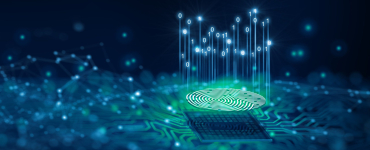The cybersecurity landscape is undergoing a radical transformation. Technologies such as artificial intelligence (AI) and quantum computing not only open up new opportunities, but also create new types of threats. Simultaneously, hybrid working models, the expansion of IoT ecosystems and the increasing networking of critical infrastructures mean that traditional security approaches are no longer sufficient. Companies are faced with the challenge of keeping pace with both technological innovations and increasingly sophisticated attack strategies.
Oliver Dehning, eco Security Expert, identifies the key trends that will dominate 2025:
AI – Finding the right balance
The rapid development of AI tools has drastically lowered the threshold for their use. Today, even attackers with little technical expertise can use powerful AI systems to optimise their operations. At the same time, threats are becoming increasingly complex and difficult for humans to detect on their own. AI-based defence systems are necessary to overcome these challenges by analysing and combatting suspicious activities in real-time. Artificial intelligence thus remains both a powerful tool and a challenge.
IT supply chain security – protection against attacks on IT supply chains
The digitalisation and networking of companies and supply chains is rapidly increasing. Cloud-based tools, IoT integrations and remote access make collaboration easier, but at the same time increase the attack surface. Cybercriminals are increasingly using these tactics, as attacks on suppliers are often less well protected than attacks on large companies. In addition, there is growing pressure from regulatory requirements such as the EU’s NIS2 Directive, which explicitly calls for stronger security standards for supply chains.
Zero-trust architecture – trust is good, control is better
With the rise of hybrid work environments and the increasing use of cloud services, the traditional network perimeter has dissolved. Simultaneously, attacks on user accounts through stolen or weak credentials are among the most common threats. Zero-trust models ensure that every access request is checked, regardless of its origin, effectively blocking attacks from both inside and outside.
Protection against deception (disinformation security)
The spread of deception technologies is being fuelled by advances in AI and the massive reach of social media. Companies are being manipulated with fake information – whether it’s highly convincing emails allegedly from “executives” or fake audio messages demanding urgent transfers. These attacks pose not only financial but also reputational risks. Security solutions to detect and counter such deceptions are critical to ensuring trust in communications.
Post-quantum encryption – protection for the future
Increased investment in quantum research – both by technology giants such as IBM and Google and by governments – is accelerating progress in quantum computing. Once this technology is ready for use, attackers could decrypt massive amounts of data that is considered secure today. This “harvest now, decrypt later” approach makes post-quantum cryptography an urgent necessity for companies that want to protect sensitive data in the long term.
Cybersecurity talent gap – skilled workers urgently needed
The ever-increasing complexity of attacks and stricter regulations are placing greater demands on security teams. At the same time, the pace of training is lagging behind demand, and companies are struggling to attract scarce talent. The automation of simple security processes offers short-term relief but cannot fully substitute for skilled specialists. To remain competitive in the long run, companies must actively invest in the development of internal talent.
Conclusion: Act now to be prepared
The cybersecurity landscape in 2025 will be more complex, interconnected – and threatening. Companies need to proactively take measures to protect themselves from future risks, from introducing new technologies such as post-quantum encryption to strengthening their teams against AI-based attacks.

-
Oliver Dehning dehning@hornetsecurity.com



